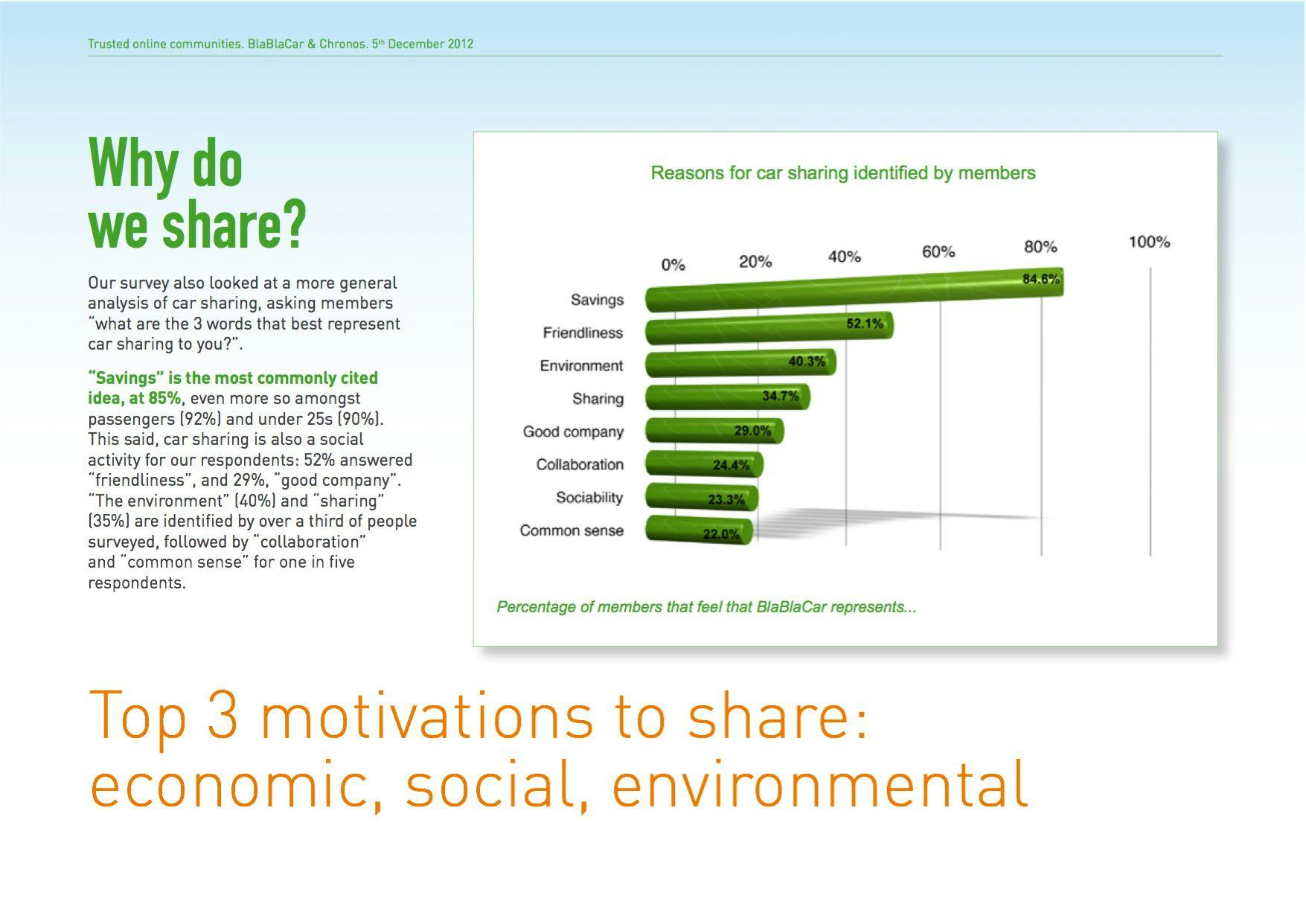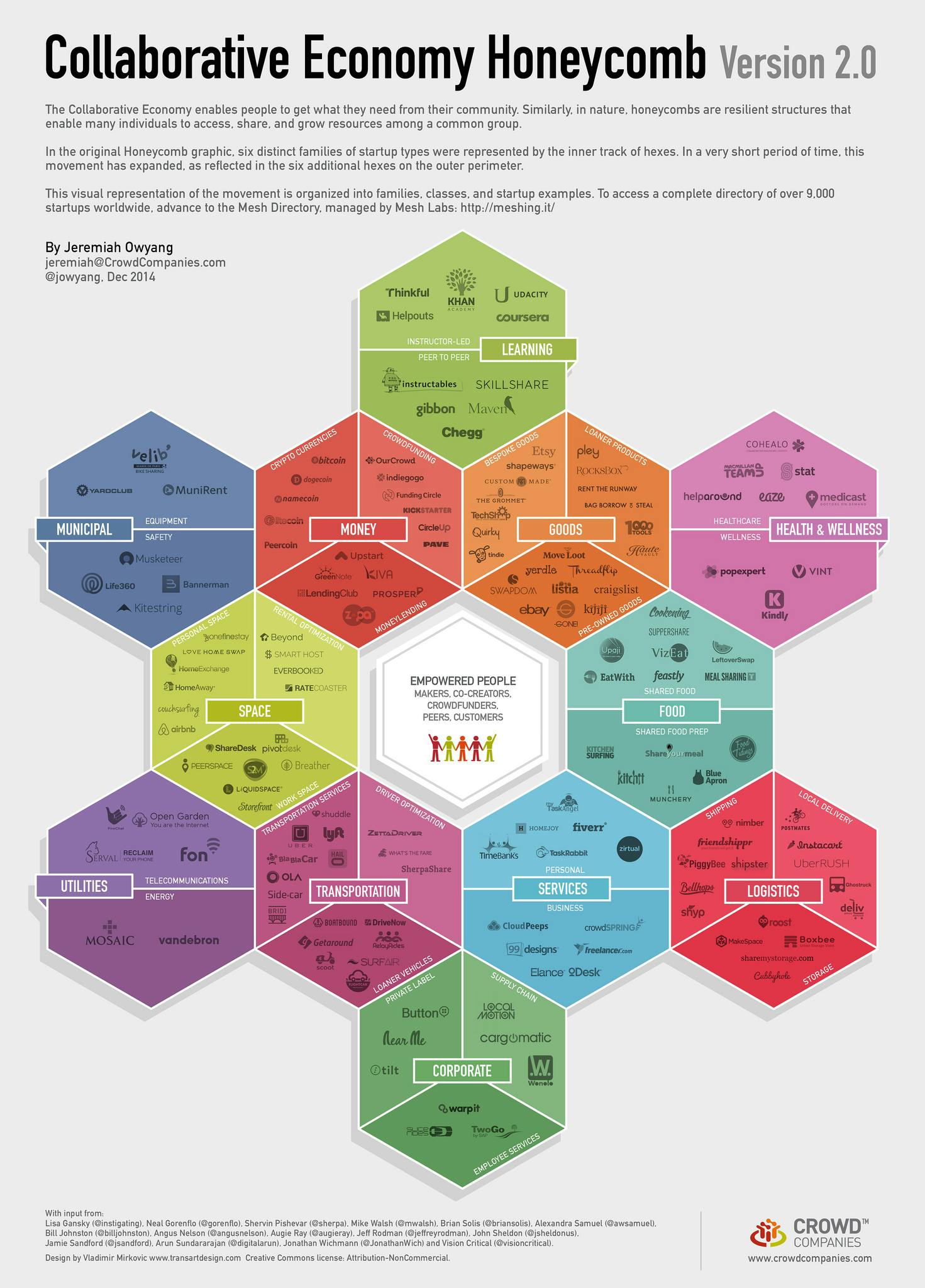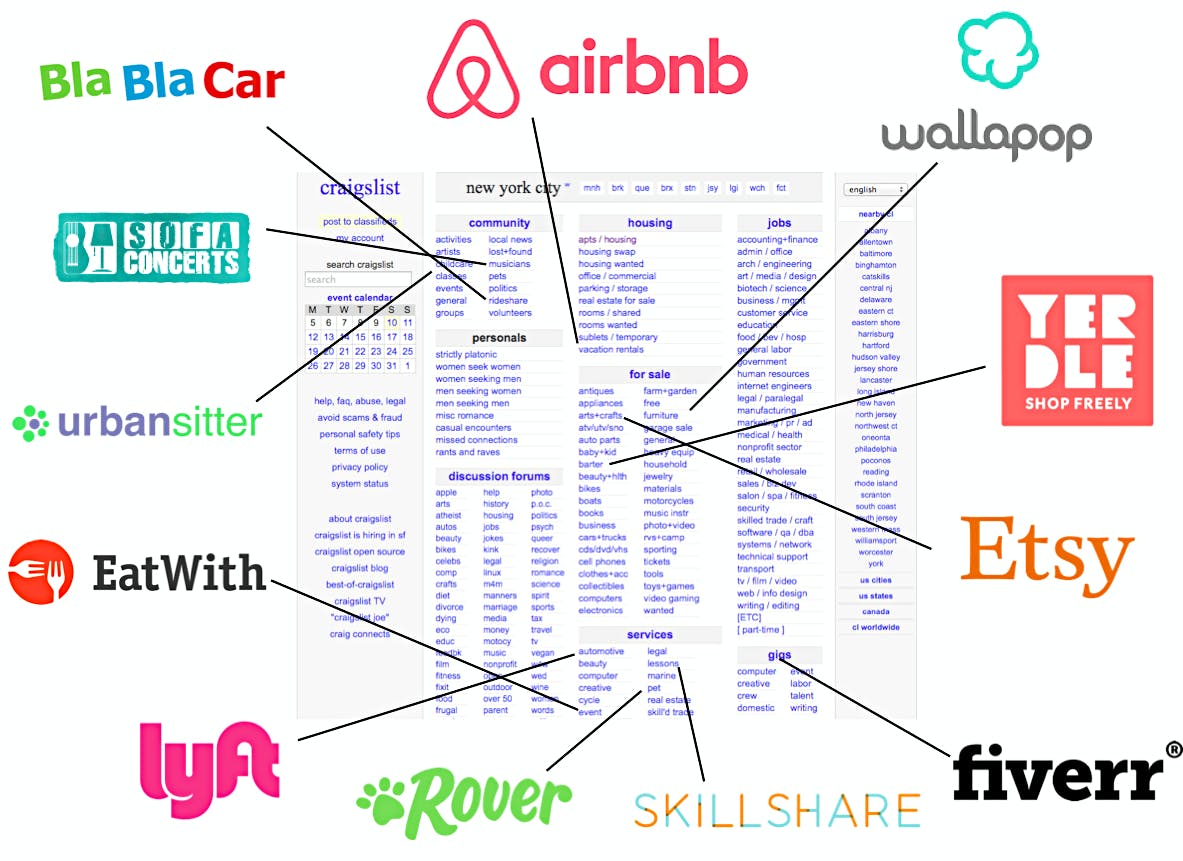How to find great online marketplace ideas
How to spot marketplace opportunities and transform them into great business ideas.
Published on
Last updated on

The second chapter of our How to create a marketplace guide focuses on great online marketplace ideas: how to come up with one and to figure out whether it's any good. Also available in audio!
Perhaps you already have a business idea that you can't get out of your mind. Or maybe you're excited about the promise of the collaborative economy, and are currently exploring different ideas. In either case, we assume that you're interested in building a successful marketplace business with thousands of users.
According to the startup playbook by Sam Altman, four things are critical for success: the idea, the product, the team, and the execution. The same basic principles apply whether you're building a global business, a local co-operative, or a non-profit. Everything starts with the idea.
In this article, we are going to cover the following topics:
- Why you need to solve a tangible problem.
- How to find markets that are ripe for disruption.
- How to improve existing solutions by adding a layer of trust.
- Why it's important to narrow your focus.
- How to do market research.
This video is part one of our video course on building a successful marketplace business.
When I meet aspiring entrepreneurs, they are usually very excited about their idea and have a global vision for their concepts. On the other hand, they usually have a much harder time defining the value proposition for their users or what kind of strategy they are going to implement to gain traction.
When someone has a marketplace idea, they tend to describe how great it is when everyone uses it. Let's take the most common sharing example: a marketplace where people from all over the world share tools with their neighbors. It's easy to relate to this concept; most people want to live in a world where things are shared with each other. Most people will tell you they love this idea. Unfortunately, this is not enough to make them actually use this service. If they do not need tools or don't have unused tools to share, a marketplace for sharing tools won't solve any tangible problem for them.
In the report Sharing is the New Buying: How to Win in the Collaborative Economy, industry expert Jeremiah Owyang shows that most people use peer-to-peer marketplaces for the same reasons they consume products in general: to get a cheaper price, better quality, or convenience. People may claim sustainability and sense of community are important values for them, but these values do not necessarily guide their actions. If something they need is expensive, or the quality is bad, or it's not very accessible, then that's a real problem. Airbnb is a great example of a marketplace that started by solving such a problem: offering accommodation and breakfast for attendees who were unable to book a hotel (due to all of them being sold out) when they came to the IDSA design conference held in San Francisco in October of 2007.
I have personally experienced the importance of addressing the right problem while using the popular ridesharing service BlaBlaCar. A few months ago, I had to travel from Seville to Badajoz to give a talk. Finding a train or coach that fit my schedule was impossible and through BlaBlaCar I found a ride. I talked to my car mates and had a great experience during the round trip. They told me they use the platform because "coaches and trains are more expensive, and their routes and schedules are not flexible enough". A report from BlaBlaCar backs up this experience with data: members use the car-sharing service mainly because it’s cheaper than other mobility services.

Not solving a real problem is one of the most common reasons for marketplace failure. Make sure your marketplace does not fall into this trap.
How can you be sure you have found a problem that is worth solving? Marketplaces are particularly tricky since you need to solve a problem for both sides: the customer and the provider. In other words, solving one big problem might not be enough—it's very likely you will need to solve two.
Even if money is not always the best measure, it can be a good exercise to measure the size of the problem in terms of money. How much would you be willing to pay someone if they solve the problem for you? This is why the sharing economy marketplaces that deal with high-value items generally fare better. Getting access to a car when you need it is a lot more valuable than being able to borrow a power drill.
As Sam Altman notes, the best validation usually happens after you've launched something that people can use. This is why it's a good idea to launch as early as possible. However, there are also things you can—and should—do before building your first product. We'll cover these ideas in an upcoming chapter about validating your idea.
A common strategy for successful marketplaces is unlocking the economic value of idle assets. Vincent Rosso, former manager for Spain and Portugal at BlaBlaCar, was very clear with his statement: “Every day, there are around 100-120 million empty car seats in Spain”. BlaBlaCar's mission is to fill up these seats with passengers, using the car in a more efficient manner. According to sharing economy thought leader Robin Chase, the purpose of any marketplace platform is "[...] to liberate the value hidden in excess capacity by engaging others: their assets, time, expertise and creativity."
It's time to put on your "collaborative glasses". Look at the world around you. Try to find excess capacity, underutilized resources, and assets that are not being used in an efficient way. Think of your work and your hobbies. Do you work in theater? How about a marketplace for renting out costumes. Are you a teacher? A marketplace for selling your teaching material. Do you coach junior hockey? A marketplace for selling used skates and other equipment. Do you like gardening? A marketplace for sharing plants and seeds. The opportunities are everywhere.
Jeremiah Owyang explains how marketplaces impact all areas of our society through the Collaborative Economy Honeycomb. The first version only had six types of marketplace families, but six more were added for the latest version. In the future, we might see the addition of even more sectors.

By studying the honeycomb, you can find markets that are ripe for disruption. The hottest startups have emerged in transportation, goods, space, and money, but there are still plenty of opportunities for solutions in other areas such as utilities, health, wellness, corporations, and municipalities. We're still in the early days of the marketplace industry. In 2021, service and physical goods marketplaces were most successful: you can read more about them in our comprehensive revenue model study of the best-berforming marketplaces of last year.
Marketplaces are great at aggregating products or services into one place and making them easily accessible and searchable by customers. Marketplaces thrive in areas where there are lots of small players offering their services instead of big, centralized providers.
Thumbtack has chosen the local professional services market, from plumbers to guitar teachers. Fiverr and Upwork cater to freelancers that provide digital services. Etsy helps individuals sell their custom-made crafts through the multi-vendor marketplace model. These types of service providers have existed for a long time, but they lacked a central aggregator before the marketplaces came along.
You can find another great example of this approach in this video about how the EatWith team set out to disrupt the food industry.
From the customer's point of view, the marketplace offers a one-stop shop: find all the providers from the same service and easily compare them. From the provider's point of view, the marketplace brings them more clients. Both parties get their problems solved. Everyone wins.
There's nothing new in the real-world encounters that these marketplaces facilitate. Hitchhiking, selling second-hand clothes, borrowing tools, and sharing apartments were common practices long before the new wave of marketplace startups emerged. What's new in modern solutions is how easy it is to interact with strangers.
“Craigslist, the king of liquidity, ironically, doesn’t have a reliable method of determining a user’s reputation."
Years ago, many times I used the classifieds marketplace Loquo (the Barcelonian version of Craigslist) to find a room in a shared apartment in Barcelona and I remember only choosing listings that had pictures. I was also very picky about the way the post was written. Loquo didn't have a reputation system, so I had to rely on intuition to decide if the apartment would be worth visiting and whether my potential roommates would be nice. Finding a room through Loquo was a tedious process: it required a lot of dedication to filter through the listings and visit potential apartments to find a suitable one.
The experience with Airbnb is totally different. I can see apartment reviews, the owners have verifications, and even our mutual Facebook friends. Airbnb has brought trust to a market where there previously was none, and because of that, they're making the experience a lot more pleasant for everyone.
In this fabulous article, Sangeet Choudary of Platform Thinking Labs explains how Craigslist is facing a threat from the new players that are disrupting its verticals one by one:
“Craigslist, the king of liquidity, ironically, doesn’t have a reliable method of determining a user’s reputation. While this may be acceptable for certain categories (e.g. selling low-value goods), it can be an important decision criterion for categories with high risk (e.g. babysitters, dating, apartment sharing) or high ticket investment (e.g. trading used high-end goods)”
Airbnb is disrupting Craigslist in apartments, Etsy in custom-made goods, Thumbtack in local services, BlaBlaCar in ridesharing, and so on. All these new players use elaborate reputation systems to build trust and make sure things go smoothly.

If you are looking to start a marketplace, studying Craigslist categories is a great way to understand niche markets and find ideas. The more listings there are in a certain category, the bigger the demand. Can you find a category where there does not seem to be enough trust between providers? That category might be your opportunity.
How do you design a reputation system and build marketplace trust? That's a very big question and one that we'll get back to in a later chapter of this guide.
Classifieds marketplaces like Craigslists and Loquo are horizontal platforms: they facilitate exchanges in multiple different categories, like jobs, ridesharing, services, buying and selling stuff, renting apartments, and so on. In contrast, Airbnb is a typical example of a vertical platform. It focuses on one problem: finding temporary accommodation.
Vertical platforms have an advantage over horizontal ones. Since they focus on only one thing, they are often able to do it extremely well. They can build their platform solely around the one problem their users have and thus provide a great experience.
Along with not solving the right problem, another common reason why marketplaces fail is having too broad a focus. A narrow focus is especially important during the early days of your business when your resources are limited. It's simply much easier to build a product for a specific target group. You can tailor your message and your features with only that group in mind.
If you choose a narrow vertical, it will also be a lot easier to achieve critical mass in that vertical. If your marketplace is about sharing all kinds of tools everywhere in the world, someone looking for a jackhammer in France might be disappointed since there are no jackhammers available in France yet. If you focus only on sharing jackhammers in Detroit, it's quite likely that your customers find what they're looking for.
When working with early-stage entrepreneurs, having too broad a focus is a problem that I run into time and again, and convincing the founders to narrow their focus is always a challenge. Having a slightly broader focus can be a good early-stage strategy to find your niche, but once it has been found, focusing on one product or service vertical is the way to go for the majority of marketplaces. It's often helpful to think about how the biggest companies got started. Amazon started by only selling books. Airbnb started by offering accommodation to designers who were attending a specific conference in San Francisco.
Do you have a great idea for a marketplace but feel there are already too many giants in that market to compete with? One strategy is to narrow your focus, both geographically and in terms of the offered products or services. You might not want to compete with Airbnb on building a global platform for temporary accommodation, but perhaps focusing only on renting summer cottages in Finland or castles in France might bring you your competitive advantage.
You can always broaden your focus later on once you get the initial vertical going. ThredUP first started with too broad a focus, and after failing to gain traction, they narrowed it down to focus only on kids' clothes. Once they were successful in that segment, they extended their offering to adults as well. Knok started as a general home exchange platform and pivoted to focus only on families. Later on, they scaled their offering to home exchange, apartment rentals, and local guides to the families as well.
I expect that as the costs of building marketplace businesses go down, we are going to see more and more specialized marketplaces that excel in serving very specific user segments and geographies. Not all of them will be the size of Airbnb, but that should not always be the goal—quite often, it's enough to build a solid, sustainable business and focus on serving your core users. A good example of this type of niche marketplace is Behomm, a home exchange community for creatives and design lovers.
After you come up with a great idea, the next natural step is market research: is someone already doing the same thing? I have met many entrepreneurs who state they are "the first marketplace that allows people to share clothes from their wardrobes" or "the first marketplace for sharing idle equipment between companies" when in fact, similar marketplaces already exist.
If your idea is any good, it is quite likely that someone else is already working on the same thing. The best ideas usually come to multiple people at once. Do not be discouraged by this. In the end, execution is what counts. As was discussed above, one good way to combat competition is to narrow your focus, either geographically or by segment.
Even though you should not be discouraged by competition, it is still a priority to take a quick look at the market to see how others are trying to solve the same problem you have identified. To do this efficiently, using some kind of methodology is recommended. Here is my usual approach when looking for information about competitors or similar projects, in this case, when working with a team of a marketplace for yoga teachers that I used to advise:
1. First, I used Google to find initial information about similar initiatives and potential competitors.
This led us to a competitor targeting yoga centers and teachers. We concluded that their supply was built upon databases. We also discovered two other interesting and successful projects that gave us insights to help define our strategy. It's a good idea to build a list of all the search queries you can come up with and go through the results one by one.
I used Google's date interval feature to find news articles from past years with relevant information about their strategy and pivots. Using this feature, I found out that one of the companies had changed their name and had a decisive pivot in their business model.
AngelList and CrunchBase are convenient databases for finding this type of information. The information you will find on these sites is not 100% accurate, but it will still give you an idea about the state of the companies. For instance, I found out that one company had just raised an initial seed fund round.
There are quite a few directories out there. Some examples are the Sharemrkt directory, the honeycomb 2.0 from Jeremiah Owyang, and the consumo colaborativo directory for Spanish and Latin American projects.
As said, if your idea is any good, you can expect others to be working on the idea as well. This means that you should not be afraid of talking about your idea with others. On the contrary, you should talk about it with everyone you know. As Sam Altman points out:
"You don't need to be too secretive with your idea. There are at least a thousand times more people that have good ideas than people who are willing to do the kind of work it takes to turn a great idea into a great company. And if you tell people what you're doing, they might help."
Sharing your idea with others is a great way to get relevant feedback and perhaps hear about related projects. Share your idea with friends and family, the people in your coworking space, the people you meet at networking events, the people you meet at a nightclub, anyone and anywhere. I remember being at a party in Paris when someone was excited to introduce me to the founder of WhereIsMyMat just because he knew I was working on the marketplace for yoga teachers I mentioned before. If nobody is familiar with your business, no one will be able to help you.
"You don’t need to be too secretive with your idea. [...] And if you tell people what you’re doing, they might help."
It might also be a good idea to contact the other companies in your field. This lets you learn more about them, understand their strengths and weaknesses, and have a better idea of where you should focus on.
Finding a great idea is a critical step in building a sustainable marketplace business. You should make sure that with this idea, you're solving a real, painful problem for both the customers and providers of your marketplace. In the early days, it's especially important to focus on a narrow niche to that mission.
Many great marketplace ideas are based on unlocking idle assets or aggregating small providers from fragmented markets. In many cases, you can improve on the existing solutions by building a layer of trust with your marketplace.
Once you have come up with an idea, research the field to find out what others are doing. If your idea is any good, others are likely working on it as well. Don't be discouraged—instead, talk about your idea openly to everyone and try to find a unique angle and strategy to focus on.
Already have a great idea? Great, let's move forward to choose the right business model for your marketplace.
You might also like...

The marketplace business model – how to monetize your marketplace
Learn how the marketplace model works and how you can choose the right revenue strategy for your business.

Why you should launch your marketplace early
‘Time is money’, and other teachings to inspire you to take the plunge and launch your marketplace as soon as you can.

What you need to know to plan your marketplace business
An introduction to online marketplaces. What they are, why they are booming, and why you should build one.

Online marketplace design: the 5 principles of a great marketplace UX
Five key online marketplace design principles and tons of practical tips and examples. Courtesy of marketplace UX designer Fiona Burns.
Start your 14-day free trial
Create a marketplace today!
- Launch quickly, without coding
- Extend infinitely
- Scale to any size
No credit card required
